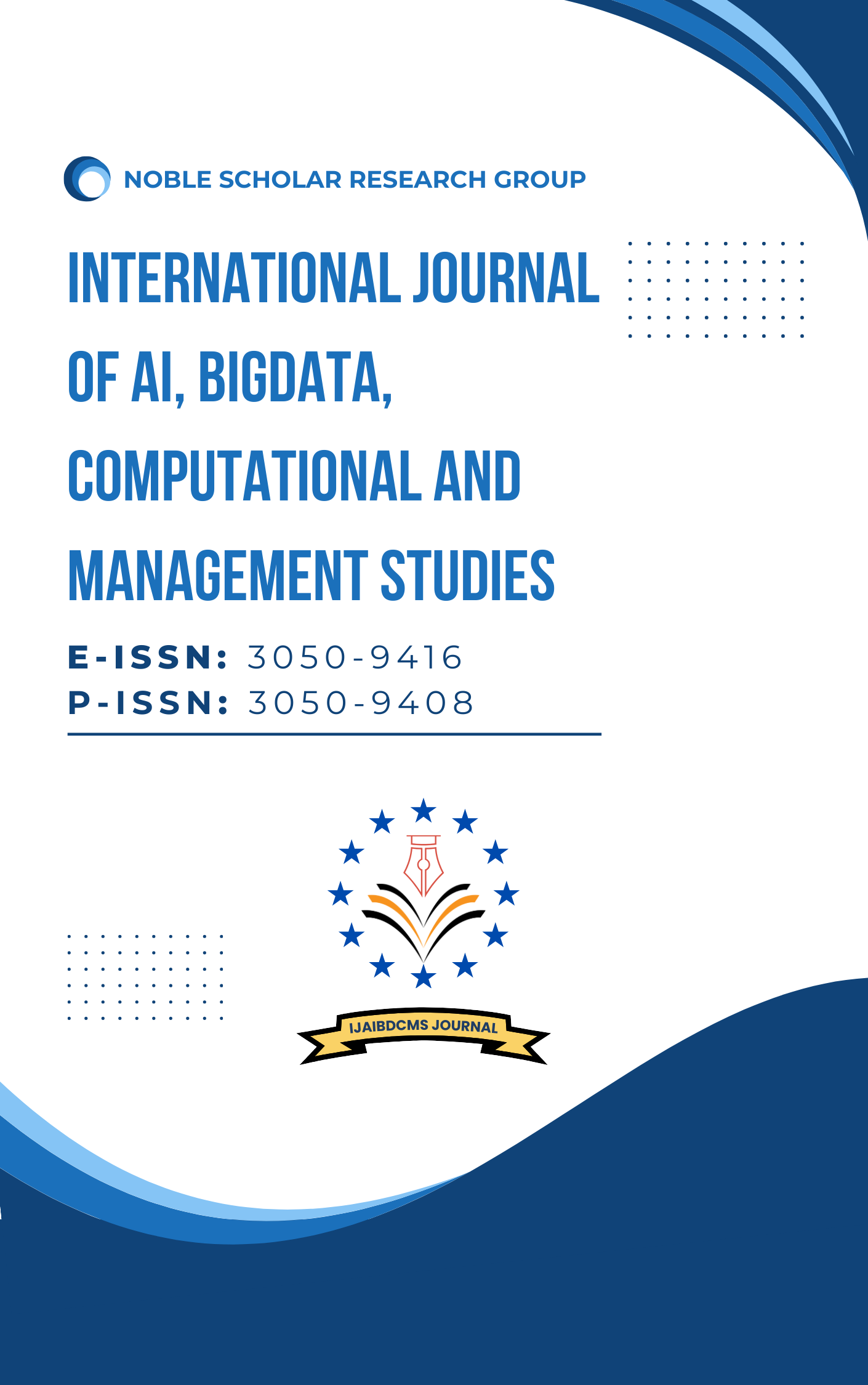Optimizing Java for Containerized Environments: Docker and Kubernetes Best Practices
DOI:
https://doi.org/10.63282/3050-9416.IJAIBDCMS-V2I4P104Keywords:
Java, Docker, Kubernetes, JVM Tuning, Containerization, Resource ManagementAbstract
Containerization has done the magic where software deployment is concerned, as it has provided a mechanism through which applications can be easily packaged, distributed and managed. Docker and Kubernetes allow developers to package applications into lightweight standalone environments with all the necessary dependencies, thus guaranteeing applications work the same way in all environments. This is particularly important in large-scale systems, where scalability, reliability, and portability issues become essential in fulfilling the needs of today's organizational settings. But here, containerization brings some specific issues for Java applications. It is a classic example of enterprise-grade systems. These are as follows: Memory management and allocation, which appear poor, bigger start up time, and other related optimization problems which are found in every running Java application since Java and the JVM are resource hungry. The same factors may affect JVM running Java workloads more severely in limited resource settings such as containers, resulting in poor performance and high operational costs.
This paper examines ways through which Java applications can be tuned with the aim of enhancing the performance of containers at the minimum cost of resources. Some of them are JVM tuning, such as heap sizing and choosing the right garbage collectors, and auto scaling utilized by Kubernetes to optimize resources, such as container image size by modularity. This paper uses profiling tools, benchmarking processes, and experimental validation as part of a systematic method to analyze and solve these problems. Specific details reveal dramatic gains in system relevancy factors including, but not limited to, startup time, output rate, response time, and memory load. Targeted at developers and DevOps, who attempt tasking Java-based applications to modern cloud-native environments, the incoming work presents a response to challenges resulting from containerization. Moreover, best practices for future improvements, which include considering the usage of serverless deployment and other JVMs, like GraalVM, as the tendencies of modern deployment approaches' development are provided
References
1. Steven, P. (2019). Leveraging Containerization in QA: Best Practices for Docker and Kubernetes. Revista de Inteligencia Artificial en Medicina, 10(1), 268-275.
2. Krochmalski, J. (2017). Docker and Kubernetes for Java Developers. Packt Publishing Ltd.
3. Vasavada, N., & Sametriya, D. (2021). Cracking Containers with Docker and Kubernetes: The definitive guide to Docker, Kubernetes, and the Container Ecosystem across Cloud and on-premises (English Edition). BPB Publications.
4. Sayfan, G. (2018). Mastering Kubernetes: Master the art of container management by using the power of Kubernetes. Packt Publishing Ltd.
5. Koskinen, M., Mikkonen, T., & Abrahamsson, P. (2019, November). Containers in software development: A systematic mapping study. In International conference on product-focused software process improvement (pp. 176-191). Cham: Springer International Publishing.
6. Chiba, T., Nakazawa, R., Horii, H., Suneja, S., & Seelam, S. (2019, June). Confadvisor: A performance-centric configuration tuning framework for containers on kubernetes. In 2019 IEEE International Conference on Cloud Engineering (IC2E) (pp. 168-178). IEEE.
7. Assign Memory Resources to Containers and Pods, Kubernetes, online. https://kubernetes.io/docs/tasks/configure-pod-container/assign-memory-resource/
8. Shekhar, S. (2019). Improving Kubernetes Container Scheduling using Ant Colony Optimization (Doctoral dissertation, Dublin, National College of Ireland).
9. Dziurzanski, P., Zhao, S., Przewozniczek, M., Komarnicki, M., & Indrusiak, L. S. (2020). Scalable distributed evolutionary algorithm orchestration using Docker containers. Journal of Computational Science, 40, 101069.
10. Shirazi, J. (2003). Java performance tuning. "O'Reilly Media, Inc.".
11. 10 best practices to build a Java container with Docker, Snyk, online. https://snyk.io/blog/best-practices-to-build-java-containers-with-docker/
12. Marinilli, M. (2002). Java deployment. Sams Publishing.
13. Hamzeh, H., Meacham, S., & Khan, K. (2019, November). A new approach to calculate resource limits with fairness in kubernetes. In 2019 First International Conference on Digital Data Processing (DDP) (pp. 51-58). IEEE.
14. Java 21 Docker Optimization: 5 Best Practices for Faster, Secure Containers, Medium, online. https://medium.com/@soyjuanmalopez/java-21-docker-optimization-5-best-practices-for-faster-secure-containers-9325ad82d007
15. Nisbet, A., Nobre, N. M., Riley, G., & Luján, M. (2019, April). Profiling and tracing support for Java applications. In Proceedings of the 2019 ACM/SPEC International Conference on Performance Engineering (pp. 119-126).
16. Nathan, S., Ghosh, R., Mukherjee, T., & Narayanan, K. (2017, April). Comicon: A co-operative management system for docker container images. In 2017 IEEE International Conference on Cloud Engineering (IC2E) (pp. 116-126). IEEE.
17. JVM Kubernetes: Optimizing Kubernetes for Java Developers, pretius, online. https://pretius.com/blog/jvm-kubernetes/
18. Medel, V., Tolosana-Calasanz, R., Bañares, J. Á., Arronategui, U., & Rana, O. F. (2018). Characterizing resource management performance in Kubernetes. Computers & Electrical Engineering, 68, 286-297.
19. PANOZZO, S. Go microservices runtime optimization in Kubernetes environment: the importance of garbage collection tuning.
20. Nagaraj Parvatha (2021): This research article explores optimizing containerized Java applications within Kubernetes, focusing on JVM tuning, resource allocation, and Kubernetes-native tools like horizontal pod autoscaling.



